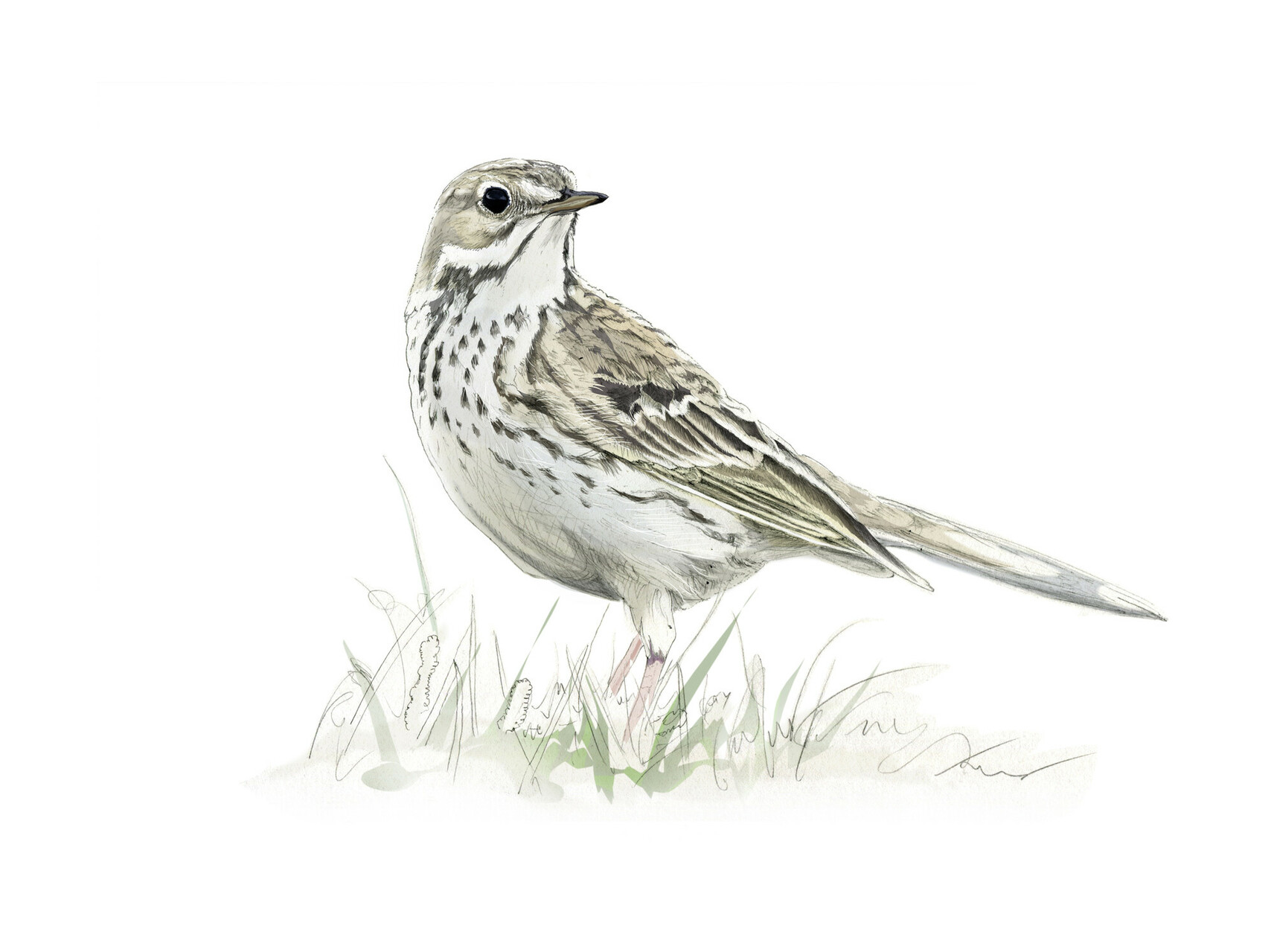
Anthus pratensis
Common throughout Britain but most abundant in the west and north of Britain, in open country such as upland moors and saltmarshes. Moves south in winter to lowland areas, with some migrating to France, Spain, Portugal and North Africa.
The meadow pipit is a small, streaky, yellow-brown bird with pale legs and white outer tail feathers. Its high, piping call – a common upland sound – gives it its common name. In spring, in the breeding season, it performs a fluttering, parachuting display. In winter, they are found gathered in small flocks, often hidden from view but then rising quickly from the vegetation.
It’s a bird of open habitats – pasture, bog and moorland – but you also find meadow pipits on arable land, saltmarshes and even open woodland. They feed on the ground, mostly eating flies, beetles, moths and spiders, and – mainly in winter – the seeds of grasses, sedges, rushes and heather. In turn, the meadow pipit is an important prey species for merlin. Females build their nest on the ground, using dry grass, and hide them in dense vegetation. They lay 3 to 5 eggs, which typically hatch after about 2 weeks, and the chicks are usually ready to fly about 2 weeks after that. Meadow pipits usually raise two broods a year.
There is concern about the number of meadow pipits, which have been in decline in the UK since the 1970s. Partly, this is due to changes in farming practice – fewer rough grazing areas means fewer places to live and eat in winter.
The National Park Authority works with land managers to improve habitats for birds and other wildlife.
Like all ground-nesting birds on the moors, meadow pipit chicks are easily disturbed by people and dogs. You can help by keeping your dog on a lead and avoiding getting too close to nest sites.